Search: Sevens Ball Off The Top From Lineout
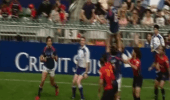
Sevens - Ball off the top from lineout
 0:17
0:17
Junior - Ball off the top from lineout 2
Junior - Ball off the top from lineout 2
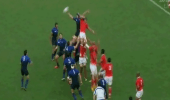
Men's - Ball off the top from lineout 2
An example of playing the ball from the top of a lineout
To watch over 2500+ videos join now for free!
JOIN NOW
Men's - Ball off the top from lineout 1
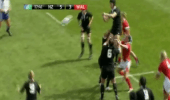
Women's - Ball off the top from lineout 2
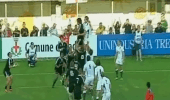
Junior - Ball off the top from lineout 1
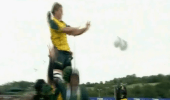
Women's - Ball off the top from lineout 1
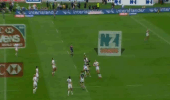 0:28
0:28
Sevens - Standard restart with attack winning ball 3
A well organised re start with one main attacker challenging for the ball with support both in front and behind him, if the ball is knocked either side of the main catcher the ball will be gathered by his teammates. Great leg drive to continue the attack and a very long pass to complete the scoring. Key factors : Accurate kick - Focus on the ball - Sideways jump - Catch ball above head - Structured support
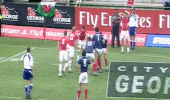 0:38
0:38
Sevens - Full Lineout 3
Accurate skills are the key to lineouts in seven's, a combination of movement, lifting and throw combine to make an effective restart for the attacking team. The shape of the attacking side is pre planned to create a mis - match with a faster player v a slower one. key factors : Pre call the move - Fast feet - Strong core for jumper - Support from both players to lift the jumper - Jumper to jump - Accurate throw - Support he jumper to the ground - Offload pass to scrum half
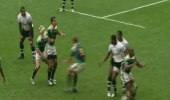 0:24
0:24
Sevens - Lineout catch & maul drive
Sevens - Lineout catch & maul drive
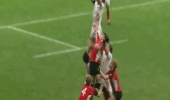 0:36
0:36
Sevens - Full Lineout 1
Sevens - Full Lineout 1
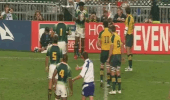 0:31
0:31
Sevens - Full Lineout 2
Sevens - Full Lineout 2
 1:03
1:03
Mike Catt - Attacking from Lineouts - Quick Ball
Classroom session with Mike Catt - discussing the key points of attacking from a lineout
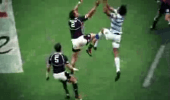 4:10
4:10
Sevens - Uncovered - The Aerial Battle
Re - starts are as numerous as scrums in seven's and coaches should put as much emphasis on the kick off as any other facet of the game. Possession is crucial in seven's and an effective re - start strategy can win not only matches but tournaments for teams. You must posses players who can kick and contest the ball in the air becasue if not you will be competing without the ball for long periods of the match. Listen to the top coaches on how important they think the kick offs are
Scrum Factory - 4. TOP Core Balls
The core ball provides a variety of challenges to the player in both body management and technical competence
Scrum Factory - 3. TOP With Rugby Balls
Expensive training equipment is not necessary and the simple rugby ball can provide an excellent technical and conditioning work out
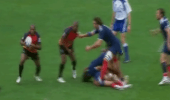 0:34
0:34
Sevens - Turnovers and move the ball 4
From a turnover in contact the attackers pass the ball wide one way and then a deep wide pass back in the other direction to pull the defence out of shape and create an opportunity to attack. Key factors : Wide flat pass - Players support from depth - Deep wide pass - Running and swerving past the defender
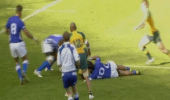 0:59
0:59
Sevens - Turnovers and move the ball 2
A turnover from a strong tackle and quick "Jackle" where the defender uses the momentum of the attacking player to swimg up onto his feet and contest the ball, this results in a line break. Key factors : Tackle technique - Urgency to get up to feet - Core strength - Speed
 1:00
1:00
Mike Catt - Attacking from Lineouts - Back Ball
Classroom session with Mike Catt - discussing the key points of attacking from a lineout
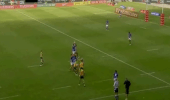
Sevens - Full Lineout 4
6. Support - Lineout Ball
Isolated technical practice
Courtesy of the SRU

Sevens - Standard restart with attack winning ball 1
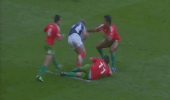
Sevens - Turnovers and move the ball 3

Sevens - Standard restart with attack winning ball 2
Sevens - Turnovers and move the ball 1
The Lineout Game - Defence
Defending against the lineout throw is a key area for disrupting the opposition and their attacking platform. The defending jumper can be very effective by getting a hand in between the opponents’ hands and disrupting the catch. This may also block the vision of the opponent who wishes to follow the flight of the ball
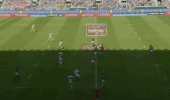 1:14
1:14
Sevens - Patterns of Play 3
Working in units and working through phases is crucial to modern day sevens and in this clip the White team show great technique and patience to work their way up the field to score. Key factors : Ball retention - Communication - Work in units - Accurate passing - Patience - Stamina
 2:59
2:59
USA Sevens - Techniques For Contact
Retaining possession in Seven's wins matches, it's that simple but these days you need to improve your contact skills. Phil Greening provides a few tips and some insight into some of the USA's training drills
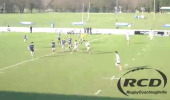 0:28
0:28
Strike move from Lineout
RGS Guildford secure lineout ball and perform a 'circle' ball, with the fly-half looping around the centre who pops the ball back to him. This is to draw in defenders, to create space out wide. The winger is able to exploit this space to complete the try.
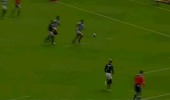
Sevens - 2 v 1
Seven's is about creating chances and then taking them. In this clip the Blue team take the ball up the middle of the pitch to draw in defenders, after recycling the ball they have a 2 v 1 opportunity, a straight line of running and a flat wide pass creates the try. Key factors : Call early - Run straight - Wide spin pass - Catch and swerve to score
 1:53
1:53
Kicking - Striking The Ball
Accurate kicking requires an understanding of how the foot should strike the ball. Expert kicking coach Dave Walder delivers a coaching clinic detailing the key factors and steps coaches should follow
 3:24
3:24
Sevens - Uncovered - The Sevens Referee
Sevens - Uncovered - The Sevens Referee
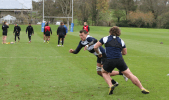 1:39
1:39
Bath - Create Quick Ball From Slow Ball
Quick ball is the platform to score tries from and one of the coaches tasks is to understand how to break defences down to create quick ball. Bath are famous for their attacking play and they are happy to share this technique and help others play fast rugby
The Lineout Game - The floor game
The lineout competition is not won and lost when the ball is caught. If the team defending the throw cannot compete in the air, they can subsequently compete on the ground and disrupt the quality of possession the opposition wish to use
 5:59
5:59
Lineout Throw with Dylan Hartley
Dylan Hartley explains his own approach and routines for throwing into the line out and provides some tips and advice to young players
The Lineout Game - Under14
Players begin to use movement with the intention of deceiving the opposition as to where the ball will be thrown. However if the ball is always thrown to the front, how effective will this movement be?
This clip illustrates how the front ball is secured by jumping and catching skill and then protected by the support players. If the same skills could be used with a middle ball, the tactical decision making will also be developed
How many coaches opt for safety and not for the long term development of their players?
 3:48
3:48
Scotland New Lineout Move
Scotlands clever score from the line out v Ireland was a great example of coaches or players being innovative and looking at new ways to do things. This clip shows a few slightly different uses for placing your scrum half at the front of the line out. It is just ideas and about pushing the boundaries of the laws
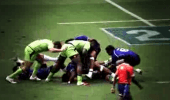 3:52
3:52
Sevens - Uncovered - The Breakdown Specialists
The breakdown has become a significant area for coaches and players to focus on. All players now need the technical skills and the intensity to compete at the tackle area and if players are poor in this area teams will be exposed. Some teams will select a specialist in this area and combine his skills with tackle technique from other players so that they work in units to turn over possesion
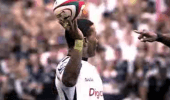 3:55
3:55
Sevens - Uncovered - The Playmaker
This footage outlines the importance of "decision making" in seven's. The top sides have players with a variety of skills but to be consistent performers teams require a playmaker who has the vision and tactical acumen to manage team tactics "On the move" and the ability to create opportunities out of nothing
Step 6 - Introducing the Lineout
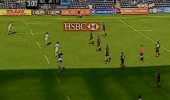 0:24
0:24
Sevens - Offloads 2
To execute an offload you need to have support players in the right area, here the ball carrier knows he has support and is able to take a risk and offload out of the back of the tackle. Prior to the offload the ball carrier works hard to stay on his feet. Key factor : Leg drive - Twist and work the body in contact - Control ball one handed - Communication from support players
 3:23
3:23
Seven's - Speed Training
See some of the exercises the England 7's players go through for fitness & speed
 3:50
3:50
Sevens Uncovered
Sevens Unccovered
 0:20
0:20
Sevens - Straight Scrums 1
A strong scrum from the black team turns over the ball for an attack. The left hand prop (Loose head) puts pressure on the Red team hooker so that he does not hook the ball effectively. Key factors : Tight binding - Low driving position - Working as a unit - Leg drive
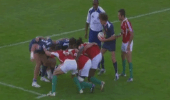 0:31
0:31
Sevens - Wheeled Scrums 1
A strong scrum can be a great weapon for attack in seven's, in this clip the Red scrum puts pressure on the defending loose head (Right hand prop) which wheels the scrum and allows the defending scrum half to disrupt the ball forcing a turnover. Key factors : Tight binding - Low body position - Leg drive - Working as a unit
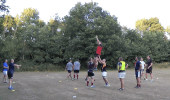 6:08
6:08
Lineout Lifting Progressions
The second session focusses on developing the basic techniques for building your line out. Wasps second row James Cannon takes some level 6 players through some progressions
 7:19
7:19
Sevens - Uncovered - The Support Staff
 4:31
4:31
Sevens - Uncovered - The Coach
What is the role of the coach. In this clip some of the top 7's coaches give some thoughts on what they do and how they see themselves in the make up of the modern 7's squad
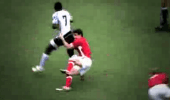 4:15
4:15
Sevens - Uncovered - Defence
The leading international coaches explain why defence is so important and how much emphasis they put on it. This clip features a variety of tackles and techniques and post good defence the opportunity to turn the ball over. Most coaches will use a system for their defence and here are some insights
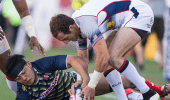 2:18
2:18
USA Sevens - Learn The Rules Of The Ruck
With less players the breakdown is much cleaner in Seven's and knowing the laws and being accurate in your skills wins matches. Mike Friday clarifies what can be a complex area and why many coaches focus on this facet of the game
 3:41
3:41
Kicking - The Drop / Ball Placement
Dropping the ball properly is considered the main priority for many kickers, if they get the drop right then the other techniques fall into place. Dave Walder from the Newcastle Falcons explains some of the skills
 1:09
1:09
Lineout Throwing with Dylan Hartley
Northampton Saints and England hooker Dylan Hartley talks through his lineout throwing procedures and explains the importance of routine
 1:55
1:55
Lineout essentials
The lineout provides an essential attacking platform. Log in to see advice and examples from pro players, suitable for elite, adult and youth players.
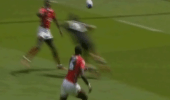
Sevens - 2 v 1
A variety of passes create a 2 v 1 which is executed perfectly for the outside attacker to score. Key factors : Different angles of running and support - Comunication - Ball presentation - Effective clearing of defenders at the breakdown - Accurate wide passes - Attack the inside shoulder of the last defender - Flat spin pass
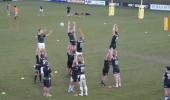 0:47
0:47
Lineout - 4 pod passing challenge
Four lifting pods must hold their jumpers aloft long enough for them to pass a ball through the hands twice. Lifters should stand close together and try to lock-out their arms. Jumpers should maintain a strong core and keep their legs straight to make life easier for the lifters.
The Lineout Game - Offloading
The ball should ideally be taken early and delivered with firm, but sympathetic direction. The arms and legs of the jumper will be ideally close together throughout the jump in order to maintain good core stability. Keeping the legs together will also assist the front lifter to remain stable. If the jumper does not control their legs, the front lifter cannot control the lift and support
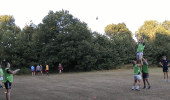 6:01
6:01
Lineout Pods and Movement
The coach progresses the line out onto small units working together, adds in some competition and starts work with some five man options
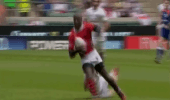 0:37
0:37
Sevens - Classic Tackle 1
Good tackle technique when chasing a player from behind. The defender gets to his feet quickly to contest the ball. Key factors : Head to one side - Arms around attackers waist and slide down - Keep your arms around the attackers legs - Use momentum to get back to your feet
The Lineout Game - Senior
“The line out principle is to catch the ball in a space where no-one else is.”
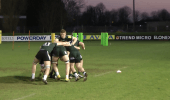 1:40
1:40
Lineout Catch-and-drive
Lineout catch and drive drill
 2:13
2:13
Lineout Tips from London Irish Forwards
London Irish forwards talk through some of the elements that make an effective lineout, and how you can prepare for a match.
 5:13
5:13
Ball Retention Techniques
Progressions are used to build the technical competency and the confidence of players learning to clear defenders away from the contact area. It is interesting to see that no contact shields are used
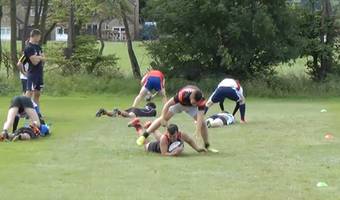 3:26
3:26
Quick Ball Presentation Drills
Use these quick and competitive games to practice good and strong ball presentation. Practice with high standards and it will come naturally in the games!
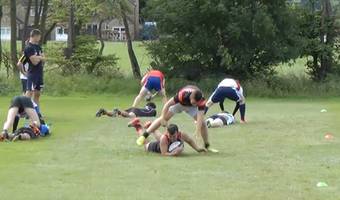 3:26
3:26
Quick Ball Presentation Drills
Use these quick and competitive games to practice good and strong ball presentation. Practice with high standards and it will come naturally in the games!
Dylan Hartley on the Lineout
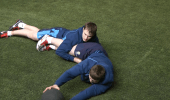 2:30
2:30
Worcester Academy - Ball Presentation
Worcester Academy - Ball Presentation
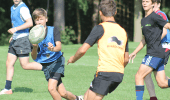 3:57
3:57
More Time on the Ball
Good players have more time on the ball? What they do do is prepare accurately with depth, width and run good lines. This sets them up to catch & pass with time and options. The practises in this clip outline some of the disciplines required to get you "More time"
 2:51
2:51
London Irish - Using Round Balls
Adding variety into your sessions keeps players interested as they learn new skills or try to improve key techniques but in a different way. Patrick O'Grady from London Irish explain why he uses different sized balls
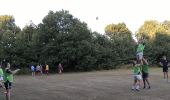 1:50
1:50
Lineout Lifting Basics
The lineout is a key part of rugby union and it is vital for player safety and success that the proper technique is learnt. James Cannon of London Wasps walks through the key technical elements of lineout lifting and jumping. Log in to see the full session.
 2:07
2:07
Don't Forget the Ball - Conor O'Shea
Early season conditioning doesn't need to be boring. Get the ball in hand and get fit (and improve skills) by using games! There are loads of great conditioned game ideas on PremiershipRugbyCoaching.com
 1:15
1:15
Geoff Parling - Lineout Dominance
Dominant lineout players such as Geoff Parling build their trade on solid technical foundations. Log in to RCD for plenty of coaching tips on lineout technique.
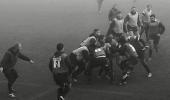 1:02
1:02
Lineout Catch & Drive
Premiership Rugby coaches and players highlight the importance of the lineout as an entry point and an attacking platform. Join PremiershipRugbyCoaching.com for ideas and examples to improve your lineouts.
 1:18
1:18
Lineout Fundamentals
Dominant lineout players such as Geoff Parling build their trade on solid technical foundations. Log in to RCD for plenty of coaching tips on lineout technique.
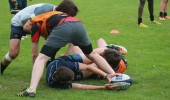 2:10
2:10
Ground Work and Ball Presentation
It is important for players to practice working hard on the ground to get the ball presented back to their team. This session uses bodyweight exercises to practice the movement and enforces it with a conditioned game. Log in to see the full video.
 2:56
2:56
USA Sevens - Creating Habits Through Collision Conditioning
Perfect practise is about replicating match conditions in training. Phil Greening outlines his approach and provides some practical examples
 0:18
0:18
Men's - Turnover and move the ball 2
Strong defence and a turnover allows two quick passes, (One long pass), and then attack the defence. The two passes have changed the channel of attack by 30 metres.
Key factors : Tackle and stay on your feet - Long quick pass / spin pass - Communicate loudly - Support the ball carrier on his shoulder
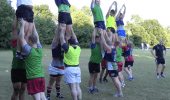 6:20
6:20
Lineout Lifting Fundamentals - Get started
An effective line out is based upon the fundamentals of movement, jumping and lifting. James Cannon from London Wasps takes some amateur players through the basic skills and techniques
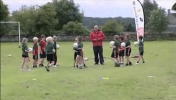 2:50
2:50
Tag Game - Keep Ball Tag
 0:58
0:58
Dylan Hartley - Lineout Throwing
Dylan Hartley explains the importance of routine and structure when preparing for each throw, in order to achieve consistency.
 0:42
0:42
Sevens - Wheeled Scrums 3
 0:41
0:41
Sevens - Offloads for continuity
Sevens - Offloads for continuity
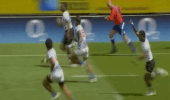 0:58
0:58
Sevens - Offloads 1
Sevens - Offloads 1
 2:52
2:52
Lineout Lifting Hand Placement
This video takes you through the importance of hand placement in building a solid lineout.
 3:32
3:32
England Sevens - Marcus Watson - Trunk Circuit
 0:16
0:16
Men's - Good body position in contact & ball presentation 2
Men's - Good body position in contact & ball presentation 2
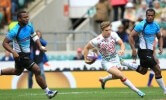 3:32
3:32
England Sevens - Tom Mitchell - Conditioning Circuit
7s training
 2:02
2:02
Joe Launchbury - Lineout Tips
England & Wasps Second row Joe Launchbury provides a few tips on the role of the lock and what coaches and players should focus on
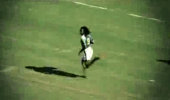 5:19
5:19
Sevens - Uncovered - Attack
Elite coaches discuss their attacking philosophies and this underpines the skills and techniques they will work on as coaches and the type of trainign sessions they will plan. As a coach how do you coach the skills that the Fijian players possess or the patience the Welsh side had to win the last 7's world cup. Does the team represent the ideas and plans of the coach?
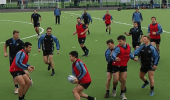 4:38
4:38
Using Games - 'Choke Ball'
Jake Sharp from Oaklands college delivers a fun game that requires a range of skills from the players. The coach uses lots of questioning to cement the learning and talk about why games are such an important coaching tool
 3:50
3:50
Sale - Lineout lifting & set
Coaching junior players to lift effectively in the line out is based upon some simple steps. Ross Harrison from Sale sharks outlines the key principles and progresses to the driving maul
Lineout Game - Target Games
This practice is a safe and enjoyable activity to develop the movement of the lifting pod and the accuracy of the throw
Chapter 6 - Introducing the Lineout
 1:29
1:29
Andy Farrell's 3 Top tips For Defence
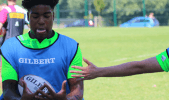 3:24
3:24
Continuity - Keeping The Ball alive
Support is one of the "Principles of play" and finding the right depth can be tricky. Harlequins Academy Manager Howard Graham delivers an excellent exercise to practise improving support play
 4:08
4:08
Grip Games - Ball Retention
This great game helps you work on your ball transfer and fend. It teaches players how to keep the ball away from contact increasing ball retention on the pitch!
QBE - Lineout Throwing Game
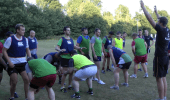 4:41
4:41
Learning to Lift for the Lineout - Get started
Some slightly different progressions in building upon the basic skills for an effective line out
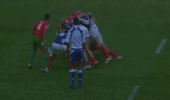 0:28
0:28
Sevens - Straight Scrums 3
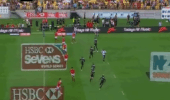 0:24
0:24
Sevens - Strike Moves 1
A simple but effective attack from a scrum. Three good passes provides the winger to run past his defender to score. Notice how the first reciever is directly behind the scrum and not to the side, (This makes the pass from the scrum easier when under pressure). Key factors : Position of 1st reciever - Run straigh and wide spin pass - Speed of the runner
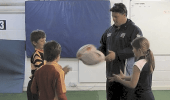 1:24
1:24
Passing Game with Two Balls
Another game to play at home. This time use two balls and four players. Anyone can join in! Three players have a simple task involving just one ball, but the central player has to juggle both balls and work on his/her concentration and hand-eye co-ordination!

